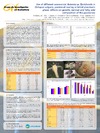Please use this identifier to cite or link to this item:
https://accedacris.ulpgc.es/handle/10553/5909
| DC Field | Value | Language |
|---|---|---|
| dc.contributor.author | Ait Chattou, M. | en_US |
| dc.contributor.author | Roo, Javier | en_US |
| dc.contributor.author | Estefanell, J. | en_US |
| dc.contributor.author | Izquierdo, Marisol | en_US |
| dc.contributor.author | Fernandez-Palacios, H. | en_US |
| dc.date.accessioned | 2011-07-22T02:31:00Z | - |
| dc.date.accessioned | 2018-06-18T06:49:52Z | - |
| dc.date.available | 2011-07-22T04:00:27Z | - |
| dc.date.available | 2018-06-18T06:49:52Z | - |
| dc.date.issued | 2006 | en_US |
| dc.identifier.uri | https://accedacris.ulpgc.es/handle/10553/5909 | - |
| dc.description.abstract | Octopus "paralarvae", are planktonic, swim actively and have high metabolic rates, requiring large quantities of live prey of adequate motility and nutritional quality ( Iglesias et al., 2000; Navarro and Villanueva, 2000, 2003). During the planktonic phase, they undergo strong morphological changes, after which the octopuses start settling to the bottom. The potential of Octopus vulgaris as candiadate for diversification of marine aquacultures are mainly due to its high food conversion rate and fast growth.( Iglesias et al 2006). Despite the research effort taken until now, paralarval rearing of O. vulgaris still suffers high mortalities which limited the industrial culture of this species. The main problems in the paralarval rearing stages are the high mortality rates and poor growth. These are attributed to the lack of standardized culture techniques and nutritional deficiencies in the diet of paralarvae, especially in n-3 highly unsaturated fatty acids (n-3 HUFA). The objective if this experience was to test different commercial live prey enrichment to improve nutritional quality of the artemia. | es |
| dc.format | application/pdf | es |
| dc.language | spa | en_US |
| dc.rights | by-nc-nd | es |
| dc.source | XII International Symposium on Fish Nutrition & Feeding, 28 May - 1 June 2006, Biarritz, France | en_US |
| dc.subject | 251092 Acuicultura marina | es |
| dc.title | Use of different commercial Artemia sp. Enrichements in Octopus Vulgaris, paralarval rearing at initial planctonic phase: effects on growth, survival and fatty acid composition of the paralarvae | en_US |
| dc.type | info:eu-repo/semantics/conferenceobject | en_US |
| dc.type | Conference poster | en_US |
| dc.identifier.absysnet | 629056 | - |
| dc.investigacion | Ciencias | es |
| dc.rights.accessrights | info:eu-repo/semantics/openAccess | es |
| dc.type2 | Póster de congresos | en_US |
| dc.identifier.ulpgc | Sí | es |
| item.grantfulltext | open | - |
| item.fulltext | Con texto completo | - |
| crisitem.author.dept | GIR Grupo de Investigación en Acuicultura | - |
| crisitem.author.dept | IU de Investigación en Acuicultura Sostenible y Ec | - |
| crisitem.author.dept | Departamento de Biología | - |
| crisitem.author.dept | GIR Grupo de Investigación en Acuicultura | - |
| crisitem.author.dept | IU de Investigación en Acuicultura Sostenible y Ec | - |
| crisitem.author.dept | Departamento de Biología | - |
| crisitem.author.orcid | 0000-0002-9660-230X | - |
| crisitem.author.orcid | 0000-0003-4297-210X | - |
| crisitem.author.orcid | 0000-0003-1410-8154 | - |
| crisitem.author.parentorg | IU de Investigación en Acuicultura Sostenible y Ec | - |
| crisitem.author.parentorg | IU de Investigación en Acuicultura Sostenible y Ec | - |
| crisitem.author.fullName | Roo Filgueira, Francisco Javier | - |
| crisitem.author.fullName | Izquierdo López, María Soledad | - |
| crisitem.author.fullName | Fernández Palacios, Hipólito | - |
| Appears in Collections: | Póster de congreso | |
Items in accedaCRIS are protected by copyright, with all rights reserved, unless otherwise indicated.
